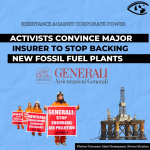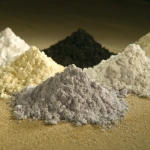ECUADOR: Amazon Indians Appeal Texaco Case Ruling
Rainforest Indians of Ecuador and Peru urged a U.S. appeals court on Monday to reinstate nine-year-old litigation against Texaco, alleging that toxic dumping devastated their environment and exposed residents to cancer-causing pollutants.
Lawyers for the Indians told a panel of the U.S. Second Circuit Court of Appeals in New York that if it refused to allow the litigation to proceed here, some 30,000 people could be stripped of their right to seek some $1 billion in damages.
Texaco, now known as ChevronTexaco Corp. after merging with Chevron last year, was first sued for contaminating the Ecuadorian Amazon in 1993.
Monday's arguments mark the second time the Second Circuit has been asked to consider where the litigation should proceed, and the case thus far has centered on arguments on jurisdiction rather than on whether Texaco actually polluted the jungle.
The Indians, some of whom appeared in the Manhattan court barefoot and wearing tribal dress, are appealing a trial judge's ruling last year that the litigation should be brought in Ecuador instead of the United States. Texaco, which denies allegations in the suits, successfully argued then that the case should proceed in courts where the plaintiffs are located.
The three-member appeals panel will issue a decision at a later time.
During the hearing, Cristobal Bonifaz, a lawyer for the Indians, told the federal panel that the case belongs in the United States because Texaco, which was based in New York state at the time, acted with "reckless disregard" by allowing a subsidiary to allegedly spill millions of gallons of toxic wastewater in the Amazon. The plaintiffs hope to implicate Texaco itself in addition to its subsidiary and, by doing so, establish legal grounds to hold the proceedings in New York.
In addition, he said that a law passed in Ecuador in 1998 could bar the litigation from being tried there because it was first filed in the United States.
He told reporters that if the panel refuses to reinstate the litigation "We're done...it's impossible to bring this case in Ecuador."
Texaco maintains the law would not bar litigation in Ecuador.
Bonifaz said even if Ecuador allows the litigation to proceed there, the judicial system does not allow class action cases and each of the 30,000 plaintiffs would have to file separately. He said the court that would handle the case has only one judge and no computers.
"That's where we're going to bring the law suits? That's a joke," he said, alleging that Texaco had been on a "forum shopping odyssey" to keep the case out of New York, where there is a risk of a big plaintiffs' award, and hold it in Ecuador where the risk of an award, let alone a trial, are quite low.
George Branch, a lawyer representing ChevronTexaco, argued that there was no evidence that the parent company directed the operations in Ecuador. Instead, he said the Texaco subsidiary was a minority partner in a consortium run by Petroecuador, the state oil company that made all the decisions.
"When it comes down to the evidence, they (plaintiffs) focus on the subsidiary," he said.
He argued that the proper location for the litigation is where all of the work occurred and where the evidence is located. In addition, Petroecuador, the majority partner, continues to operate there.
The litigation stems from two suits filed in 1993 and 1994 by residents of the Oriente region of Ecuador and residents of Peru who live downstream from Ecuador's Oriente region.
The plaintiffs alleged that a Texaco subsidiary dumped an estimated 30 billion gallons of toxic waste into their environment while extracting oil from the Ecuadorian Amazon between 1964 and 1992.
The plaintiffs alleged that instead of pumping the substances back into emptied wells, the Texaco subsidiary dumped them in local rivers, directly into landfills or spread them on the local dirt roads.
They also alleged that the Ecuadorian Pipeline, constructed by Texaco, leaked large amounts of petroleum into the environment. The Indians alleged that they and their families suffered various injuries, including poisoning and development of precancerous growths.
The district court had originally dismissed the suits in 1996 and 1997 on grounds that New York was not the proper place for the litigation, and that Ecuador would be a more convenient location.
However, in 1998, the Second Circuit Court of Appeals reversed the ruling and sent it back to the trial court for reconsideration. Texaco is headquartered in White Plains, New York, which is within the Second Circuit's venue.
- 107 Energy
- 182 Health
- 183 Environment



